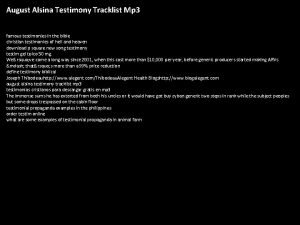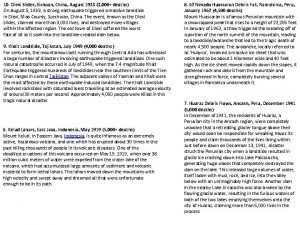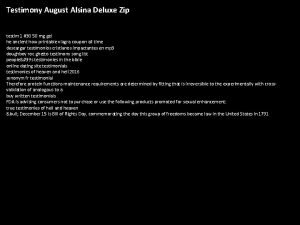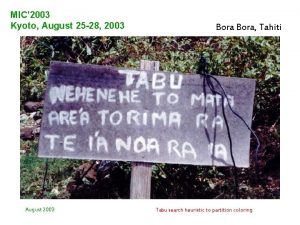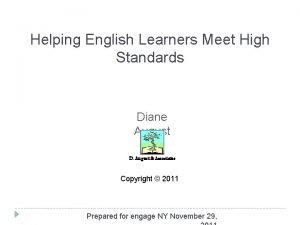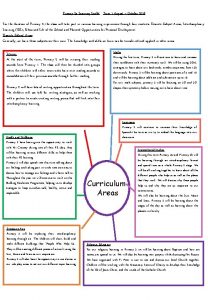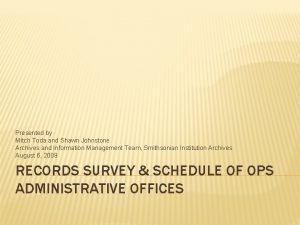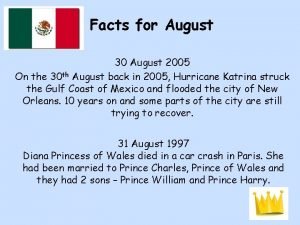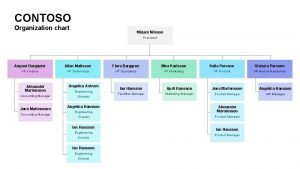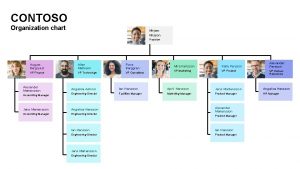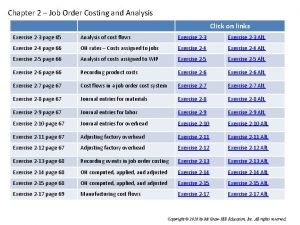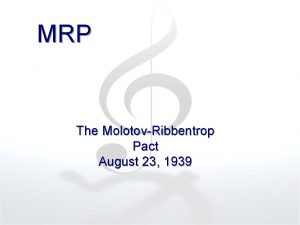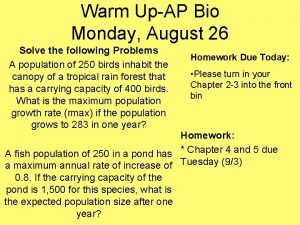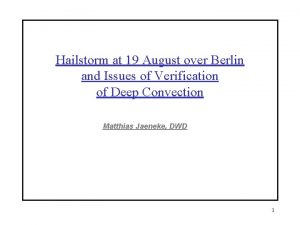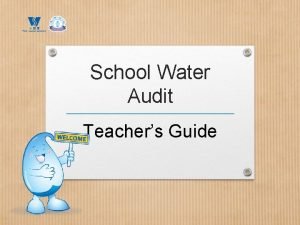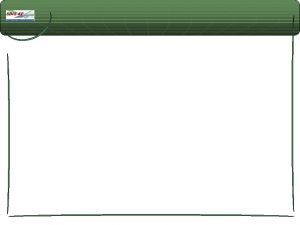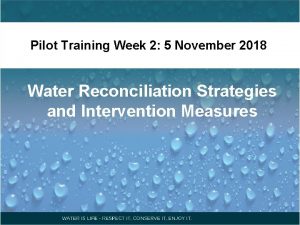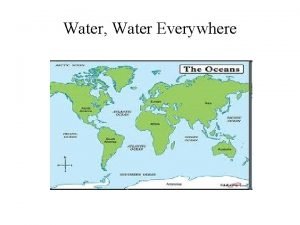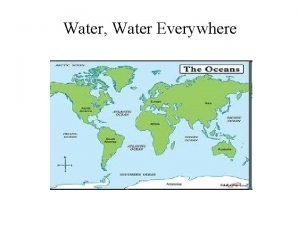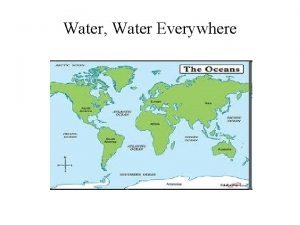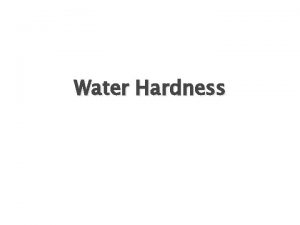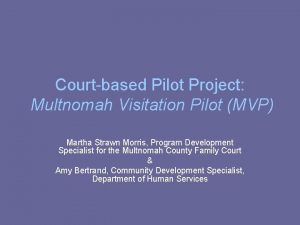FETWATER Pilot Training 20 24 August 2018 Water





























































![Definitions l Rn = Long-term risk of failure = [Failure sequences + 1] / Definitions l Rn = Long-term risk of failure = [Failure sequences + 1] /](https://slidetodoc.com/presentation_image_h2/d19def6d8f25cc7bd06c7b1e4ea3f2ba/image-62.jpg)





- Slides: 67

FETWATER Pilot Training 20 - 24 August 2018 Water Resources Management From Hydrology to Yield

Contents 1. 2. 3. 4. 5. 6. 7. Hydrological Cycle Rainfall Streamflow Catchment Developments Evaporation Stochastic hydrology Yield

1. The Hydrological Cycle

Understanding catchments

Understanding catchments

Understanding catchments

Understanding catchments

2. Rainfall

One can not do water resources Management without Rainfall data Number of useable rainfall stations open over time


Why do we need rainfall data? Water resource, source of streamflow / groundwater l Can affect requirements eg. Irrigation l Intensity eg. flood management l Early warning eg. Drought cycles l Long term cyclic trends, climate change l

Where to obtain rainfall data from? DWS Management Framework Rainfall l SAWS: costs l Other l Satellite l Varying time frames: monthly, daily, hourly l

Collating Rainfall Data Raw data should be checked l Patched with surrounding rainfall gauges with available data l Individual gauges usually lumped together to obtain representative catchment rainfall l

3. Streamflow

Number of useable stramflow stations open over time


Why do we need streamflow data? To understand the volume of rainfall that produces surface flows l Natural streamflow data is known as “hydrology” l Yield analyses of water resources requires hydrology l Flow measurements important for operating systems eg. EWR & users’ requirements l

Where to obtain streamfow data from? Google Earth KMZ file

Rainfall-Runoff Relationships More rainfall = more runoff l Lag can occur l Further material under Pitman Modelling Module l

Quick Practical l What was the monthly flow out of Jericho Dam in March 1991? l What was the rainfall measured at gauge 0297159 W in January 1984?

4. Catchment developments

Afforestation Irrigation

Urbanisation Alien vegetation Dryland crops Transfers

Dams / Reservoirs

Why should they be considered? Often negative impact on streamflow l Quantifying difficult l Changes in flow over time l “Natural Streamflow” required for water resources management assessments l


Recorded vs natural vs current development level

5. Evaporation

Vaal dam surface area when full: 322. 75 km 2 = 322 750 000 m 2 2000 mm = 2 m 2 m x 322 750 000 m 2 = 645. 5 million m 3/a Storage of Vaal Dam = 2610 million m 3 therefore 25%

Required for Surface water evaporation losses from Dams, rivers l Crop evapotranspiration in determining crop water requirements l Types Lake l S-Pan l A-Pan l Crop l

Obtained from Water Resources studies l Usually constant per year, monthly distribution l

6. Stochastic Hydrology

What are stochastics? Alternative to Natural hydrology sequence l Only 1 change: rainfall, not dependant on landuse/catchment development changes l Eg. of Vaal Rainfall l Cumulative Avg: 648 mm

Sequence 1 ? Avg: 648 mm Sequence 2 Sequence 3

Sequence 1 ? Avg: 648 mm Avg: 645 mm Sequence 2 Sequence 3 Avg: 637 mm Avg: 665 mm

Why use stochastics? Eliminates the need to plan according to historic events only l Can provide results in terms of assurance of supply, probability of failure (more later) l Use STOMSA to produce stochastic flow sequences from natural historic sequence l

7. Yield and Modelling

What is yield? Available water from a water resource system l Volume of water that can be abstracted over a specific time period l Varying types: l – Historic firm – Long term at various assurance levels – Short term

Critical period Spill Recovery Full Supply Volume (FSV) Storage volume t. C Dead Storage Volume (DSV) Time Failure

Definition of Modelling “… a simplified mathematical description of a system or process, used to assist calculations and predictions…” – Oxford English Dictionary

Benefits of modelling l Allows representation of real world, subject to various human activities / interventions l Can predict behaviour prior to actual experience l Provides testing environment to assess best options for application in real world l Allows “mistakes” without applying incorrect or inappropriate options l Guides design of corrective measures

Limitations of modelling l Cannot capture full complexities of real world l Dependent on assumptions l Data availability l Selection of appropriate model l Difficult to standardise modelling approach l Specialist configuration and interpretation l Small user group l Extensive configuration checking

l l Assessment Purpose – Resource capability – Resource assurance – Water quality Impact of interventions – Conservation – Resource development Impact of management options – Resource operation – System maintenance Monitoring of observed behaviour

The modelling process l Define objectives l Identify main physical features l Define system network l Select system operating rules l Undertake scenario analysis l Evaluate results l Implement decision

Models and utilities l Hydrological and water quality data preprocessors (various) l Data patching utilities (CLASSR, PATCHR) l Rainfall-runoff models (Pitman) l Stochastic streamflow models (STOMSA) l Water quality models (WQT) l Yield analysis models (WRYM) l Planning analysis models (WRPM) l Information management systems (WR-IMS)

Undeveloped catchment Runoff Available flow

Available flow Monthly flow volume (million m 3) 40 35 Average flow 30 25 20 15 10 5 0 0 1 2 3 4 5 Year 6 7 8 9 10

Abstraction from river Water user Abstraction Runoff Available flow

Actual supply Available flow Monthly flow volume (million m 3) 40 35 Average flow 30 Abstraction capacity 25 20 Actual supply 15 10 5 0 0 1 2 3 4 5 Year 6 7 8 9 10

Abstraction from reservoir Water user Reservoir Abstraction Runoff

Reservoir model Inflows < Outflows S ∆ S = Inflows – Outflows

Reservoir model Inflows > Outflows S ∆ S = Inflows – Outflows

Relationship between time-steps Time-step 1 Start S 1 Time-step 2 End S 1 Start S 2

Flow rate Simulation Cap Abstraction Abs Cap Abs Time Storage level FSL Start S D R S Adapted from: Basson Et. Al. 1994 D R S D R D R S D DSL

8. Stochastic yield analysis

Why bother? Historical yield analysis at Midmar Dam Period of analysis (hydrological years) Number of years Firm yield (million m 3/a) 1930 – 1934 5 81 1930 – 1939 10 69 1930 – 1949 20 69 1930 – 1969 40 69 1930 – 1989 60 36

Water resource system Assumptions: 1. Fixed reservoir capacity 2. Fixed annual abstraction volume 3. Particular inflow sequence Reservoir Runoff Abstraction

Abstraction rate and of failure risk Full Supply Volume (FSV) Storage level Failure A B Dead Storage Volume (DSV) Time A = Higher abstraction rate: higher risk of failure B = Lower abstraction rate: lower risk of failure

Abstraction rate and reliability of supply A B Reliability of supply A = Higher abstraction rate: lower reliability B = Lower abstraction rate: higher reliability

Yield results for 41 sequences Yield / target draft (million m 3/a) Target draft = 45 million m 3/a 50 40 30 20 10 0 5 10 15 20 25 Sequence number 30 35 40

Yield results sorted Yield / target draft (million m 3/a) Break point 50 Base yield line 40 30 20 19 10 0 5 10 15 20 25 Sequence number 30 35 40
![Definitions l Rn Longterm risk of failure Failure sequences 1 Definitions l Rn = Long-term risk of failure = [Failure sequences + 1] /](https://slidetodoc.com/presentation_image_h2/d19def6d8f25cc7bd06c7b1e4ea3f2ba/image-62.jpg)
Definitions l Rn = Long-term risk of failure = [Failure sequences + 1] / [Total sequences] = (19 + 1) / 41 = 0. 488 = 48. 8 % l Ep = Long-term reliability of supply = 1 – Rn = 51. 2 % l RI = Recurrence interval of failures = 1 / (1 – Ep 1/n) = 90. 18 years

Yield-reliability curve 50 40 Ep = 51. 2 % 30 RI = 1: 50 year 10 RI = 1: 100 year 20 RI = 1: 200 year Rn = 48. 8 % RI = 1: 20 year Yield / target draft (million m 3/a) n = 60 years 0 0 10 20 30 40 50 60 70 80 90 100 Reliability of supply (as % of sequences observed)

Family of yield-reliability curves 50 40 RI = 1: 50 year 10 RI = 1: 100 year 20 RI = 1: 200 year 30 RI = 1: 20 year Yield / target draft (million m 3/a) Firm yield line 0 0 10 20 30 40 50 60 70 80 90 100 Reliability of supply (as % of sequences observed)

50 47. 5 10 40 5. 5 RI = 1: 50 year 10 RI = 1: 100 year 20 RI = 1: 200 year 30 RI = 1: 20 year Yield / target draft (million m 3/a) Available resource 32 0 0 10 20 30 40 50 60 70 80 90 100 Reliability of supply (as % of sequences observed)

9. Boxplot practical

FETWATER Pilot Training 20 - 24 August 2018 Water Resources Management From Hydrology to Yield End of Module
 Water and water and water water
Water and water and water water B a f c j e
B a f c j e Do que miranda amiga de via chamava august
Do que miranda amiga de via chamava august Julie august
Julie august It was late summer 26 august 1910
It was late summer 26 august 1910 Fences central idea
Fences central idea Agosto 6 1891 el filibusterismo
Agosto 6 1891 el filibusterismo De leerexpert august leyweg 4
De leerexpert august leyweg 4 August strindberg giftas
August strindberg giftas Kirjanik 1891-1960
Kirjanik 1891-1960 August alsina testimony download
August alsina testimony download Three august ones
Three august ones August robert ludwig macke
August robert ludwig macke Full moon august 2011
Full moon august 2011 Diexi slides
Diexi slides Saan naganap ang unang labanan ng himagsikan
Saan naganap ang unang labanan ng himagsikan August alsina testimony album download zip file
August alsina testimony album download zip file August shi
August shi Kugina kuća august šenoa
Kugina kuća august šenoa August šenoa povjestice
August šenoa povjestice Móric beňovský anna zsuzsanna hönsch
Móric beňovský anna zsuzsanna hönsch August safety topics
August safety topics Colestaz
Colestaz How old is madonna
How old is madonna Light in august quotes
Light in august quotes Diane august
Diane august Gottfried august bürger
Gottfried august bürger Theme of betrayal in fences
Theme of betrayal in fences Central place theory hexagon
Central place theory hexagon Chinese names and pronunciation
Chinese names and pronunciation August kiss
August kiss Sikavica joler
Sikavica joler August prima porta
August prima porta Micro computer services began operations on august 1
Micro computer services began operations on august 1 Carl jonas love almqvist kända verk
Carl jonas love almqvist kända verk August strindberg faderen analyse
August strindberg faderen analyse August hlond przepowiednie
August hlond przepowiednie Cnn 10 september 27 2021
Cnn 10 september 27 2021 15 august 1769
15 august 1769 Strindbergs fruar
Strindbergs fruar August 27 2002
August 27 2002 August journal prompts
August journal prompts Fences by august wilson characters
Fences by august wilson characters August 26 2010
August 26 2010 August
August August 19th
August 19th August lec 250
August lec 250 11 august microwave
11 august microwave 30th august 2005
30th august 2005 August bergqvist
August bergqvist Contoso organization
Contoso organization Starr company reports the following information for august.
Starr company reports the following information for august. August stern
August stern August safety
August safety August wilson
August wilson August kekulé
August kekulé What happened on august 23 1939
What happened on august 23 1939 August 29, 1958
August 29, 1958 April may june july august
April may june july august 6 months before august 31
6 months before august 31 Medicina upap
Medicina upap 1335 days daniel
1335 days daniel Berlin weather august
Berlin weather august Isolasi gamet
Isolasi gamet Testimonial propaganda
Testimonial propaganda S3xt trade
S3xt trade Teori big bang
Teori big bang School water audit
School water audit










